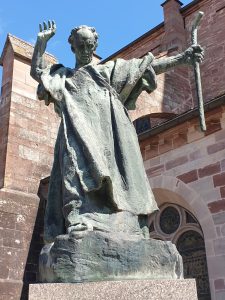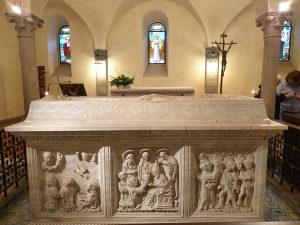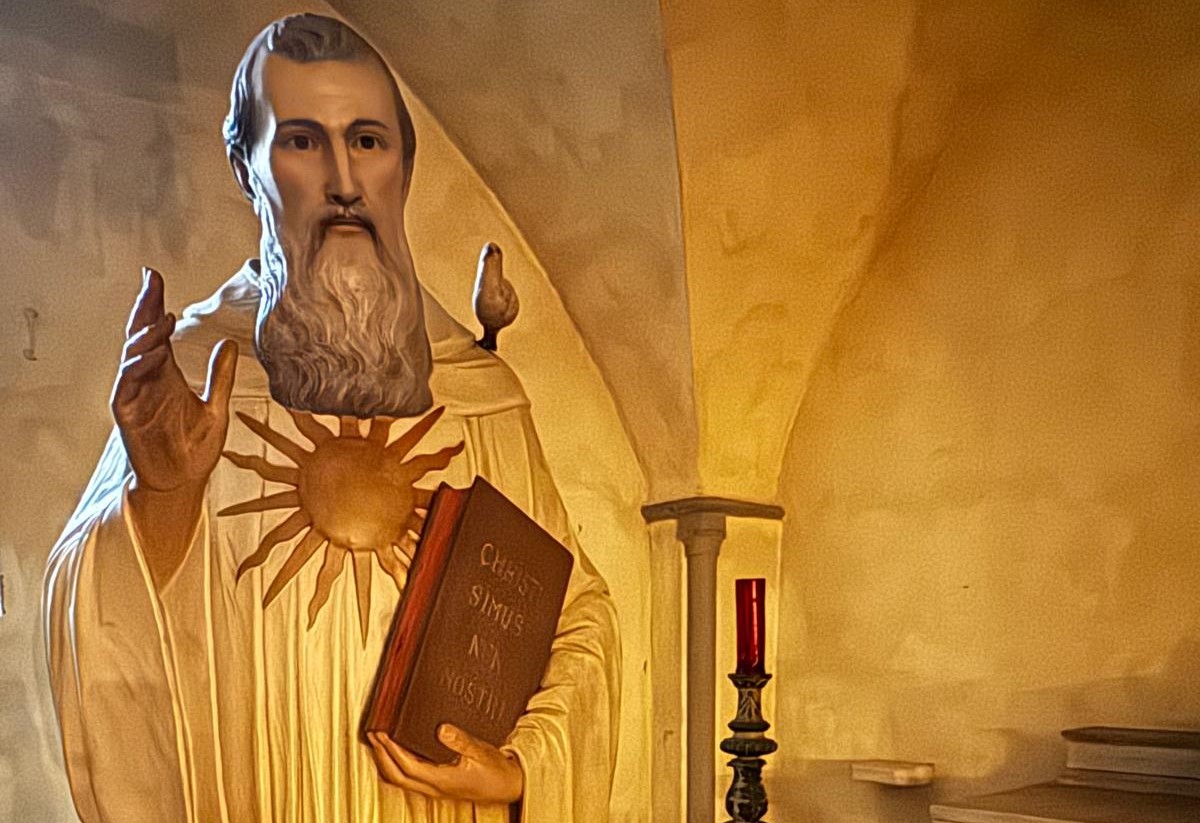St Columban’s Feast Day 23rd November
In his address of a General Audience in June 2008, Pope Benedict XVI said: “I would like to speak about the holy Abbot Columban, the best-known Irishman of the Early Middle Ages. Since he worked as a monk, missionary and writer in various countries of Western Europe with good reason he can be called a ‘European’ Saint.”
Columban was born in c.543BC in the Province of Leinster in southeast Ireland. He was educated at home by excellent tutors. He was later entrusted to the Abbot Sinell who belonged to the community of Cleenish in the north of Ireland. Here Columban deepened his study of sacred scripture.
At the age of about twenty he entered the monastery of Bangor in the northeast of Ireland. The Abbot, Comgall, was well known for his virtue and ascetic rigour. In full agreement of his abbot, Columban zealously practised the severe discipline of the monastery, leading a life of prayer, self-discipline and study. While there, he was ordained a priest. His life at Bangor and the Abbot’s example influenced his concept of monasticism which eh developed over time and subsequently spread in Europe during his later life.
When he was approximately 50 years old, following the Irish ascetic idea of the ‘peregrinatio pro Christo’, namely making oneself a pilgrim for the sake of Christ, Columban left his island with 12 companions to undertake missionary work on the European Continent. There the migration of people from the North and East had caused whole areas, previously Christianised, to revert to paganism.

Statue of St Columban outside the Basilica of Ss Peter and Paul in Luxeuil Photo: Sarah Mac Donald
Around the year 590, the small group of missionaries from Ireland landed on the Breton coast. Welcomed kindly by the King of the Franks of Austrasia (present day France) they were given the ancient Roman fortress of Annegray, totally ruined and abandoned and covered by forest.
Accustomed to a life of extreme hardship, in the span of a few months the monks managed to build the first hermitage on the ruins. This their re-evangelisation began, in the first place, through the witness of their lives. With the new cultivation of the land, they also began a new cultivation of souls. The fame of those foreign religious, living on prayer and in greater austerity, spread rapidly, attracting pilgrims and penitents. In particular, many young men asked to be accepted by the monastic community in order to live, like them, this exemplary life which was renewing the cultivation of the land and of souls.
It was not long before the foundation of a second monastery was required It was built on the ruins of an ancient spa, Luxeuil. This monastery was to become the centre of the traditional Irish monastic and missionary outreach on the European Continent. A third monastery was erected at Fontaine.
Intransigent as he was in every moral matter, Columban then came into conflict with the royal house for having harshly reprimanded King Theuderic for his adulterous relations. This created a whole network of personal, religious and political intrigues which, in 610, culminated in a decree of expulsion banishing Columban and all the monks of Irish origin from Luxeuil and condemning them to exile.
They were escorted to the sea and boarded a ship bound for Ireland. However, not far from shore the ship ran aground and the captain, who saw this as a sign from Heaven, abandoned the voyage for fear of being cursed by God, and brought the monks back to dry land. Instead of returning to Luxeuil, they decided to begin a new work of evangelisation. They travelled along the Rhine by boat and went to Bregenz, near Lake Constance, to evangelise the Alemannai.
However, soon afterwards, Columban decided to cross the Alps with the majority of his disciples. In Italy, the King of the Lombards allocated a plot of land to him in Bobbio, in the Trebbia Valley. There Columban founded a new monastery which was later to become a cultural centre on a par with the famous monastery of Monte Cassino. Here Columban ended his days on 23rd November 615.

The crypt in St Columban’s church in Bobbio with the sarcophagus of St Columban who died here on 23rd November 615AD. Photo: Sarah Mac Donald

